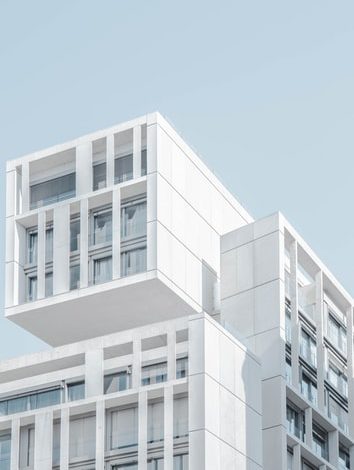Pakistan Real Estate Price Index



Because of Pakistan’s significant inflation, property prices appear to be rapidly increasing. But it’s just a trick of the light. According to Pakistan’s leading property portals, nationwide house prices rose 5.05 per cent to PKR 10,875 (US$ 77) per sq foot (sq. ft) in the year to Q1 2019. When accounting for inflation, however, house values fell 3.98 per cent over the same period. In this essay, we’ll go through the Pakistan real estate price index in more detail.
House prices:
As per the Pakistan Bureau of Statistics, inflation in Pakistan was 9.4% in March 2019, rising from 8.2% the prior month and 3.2 per cent in the same timeframe last year. This was, in fact, the most extensive reading since November 2013. Read more about blue world city location.
In Pakistan’s major cities:
- In Quarter 1 2019, the average housing price in Lahore was 10,402 rs (US$ 73) per sq. ft, up 6.25 per cent on the previous quarter but down 2.89 per cent when taking inflation into account.
- In Quarter 1 2019, housing prices in Karachi totalled 13,158 rs (US$ 93) per sq. ft, increasing 4.25 per cent each year but down 4.62 per cent when accounting for inflation.
- In Quarter 1 2019, property prices in Islamabad amounted to 9,985 rs (US$ 70) per sq. ft, rising 7.01 per cent from the previous quarter but down 2.2 per cent in actual terms.
When subsequent rupee devaluations are taken into account, Pakistani housing has grown cheaper from the standpoint of a US$-based investor. Despite the country’s problems, the GDP expanded by 5.2 per cent in 2018, following a growth of 5.4 per cent in 2017, 4.6 per cent in 2016, and 4.1 per cent in both 2014 and 2015. As per the Asian Development Bank, we expected economic growth to decrease to roughly 3.9 per cent in 2019.
New government:
Since Khan committed to remove corrupt and dynastic politics and implement market policies, investors trust in Pakistan has skyrocketed. Because the government is enacting new laws and safety and protection are improving, prices are rising. Consequently, it is a great opportunity to invest in Pakistan capital smart city, with awesome rewards.
Currency exchange rate:
Although the overall outlook remains positive following the elections, market investors are awaiting the new government’s economic policy orientation to set the standard for this year and beyond. Property values could enter a phase of continuous growth if the government provides fuel for the low-income housing push, backed by credit reform and the sale of such items by the banking industry.
Tax shelter for wealth concealment:
As per the SBP, Pakistan has a substantial informal sector, accounting for 70 per cent to 91 per cent of GDP. Due to inadequate regulatory monitoring and shallow authorized property assessments, the country’s real estate market contributes to a large share of the undeclared gains. Individuals can easily conceal their assets and levels of revenue and minimize their tax liabilities, thanks to the features of the real estate market.
Property market reforms:
In recent times, the country has implemented several measures to govern the real estate industry. We have designed most of these policies to promote openness and government tax income while also preventing speculative real estate purchases.
Absence of affordable housing:
Based on the SBP, Pakistan’s housing shortfall is projected to be over 10 million units, implying that more than 1/3 of the country’s 32 million households are without suitable housing. Worse, according to projections, the residential backlog is growing by 200,000 units per year.
Prices of residential plots:
PM Khan announced the enormous Naya Pakistan Housing Programme (NPHP) initiative, an affordable housing plan for low-income people, in October 2018 to resolve the housing issue. At least 5 million low-cost residences will be built nationally as part of this scheme.
Demand for high apartments:
Condominium living is quickly becoming standard in Pakistan as cities become more congested and land costs continue to rise. The market for apartments has surged by about 30% in the last five years, fueling new high-rise luxury residences in Karachi, Lahore, and Islamabad.
The non-existent mortgage market:
Despite the recent fast expansion, Pakistan’s mortgage sector is still relatively modest. According to Global Property Guide estimates, its size in 2018 was equivalent to a little over 0.3 per cent of GDP. What are the reasons? Interest rates and a limited number of mortgage options.
Key interest rates in Pakistan
As per the State Bank of Pakistan, the overall sum of unpaid housing loans was 90.41 rs billion (US$637.3 million) in February 2019, increasing 23.2 per cent during the same timeframe last year. From 2016 to 2018, housing loans increased by an average of 29% every year.
Final Thoughts:
The country will require slower development, greater inflation, currency pressure, and significant external financing to sustain even a small cushion of foreign currency reserves until macroeconomic inefficiencies are addressed. Firms need to become more internationally competitive as a result of recurring balance-of-payments problems.
Author Bio
M Junaid Lead Writer, Content Marketer at Sigma Properties | Taj Residencia, A writer by Day and reader by night



